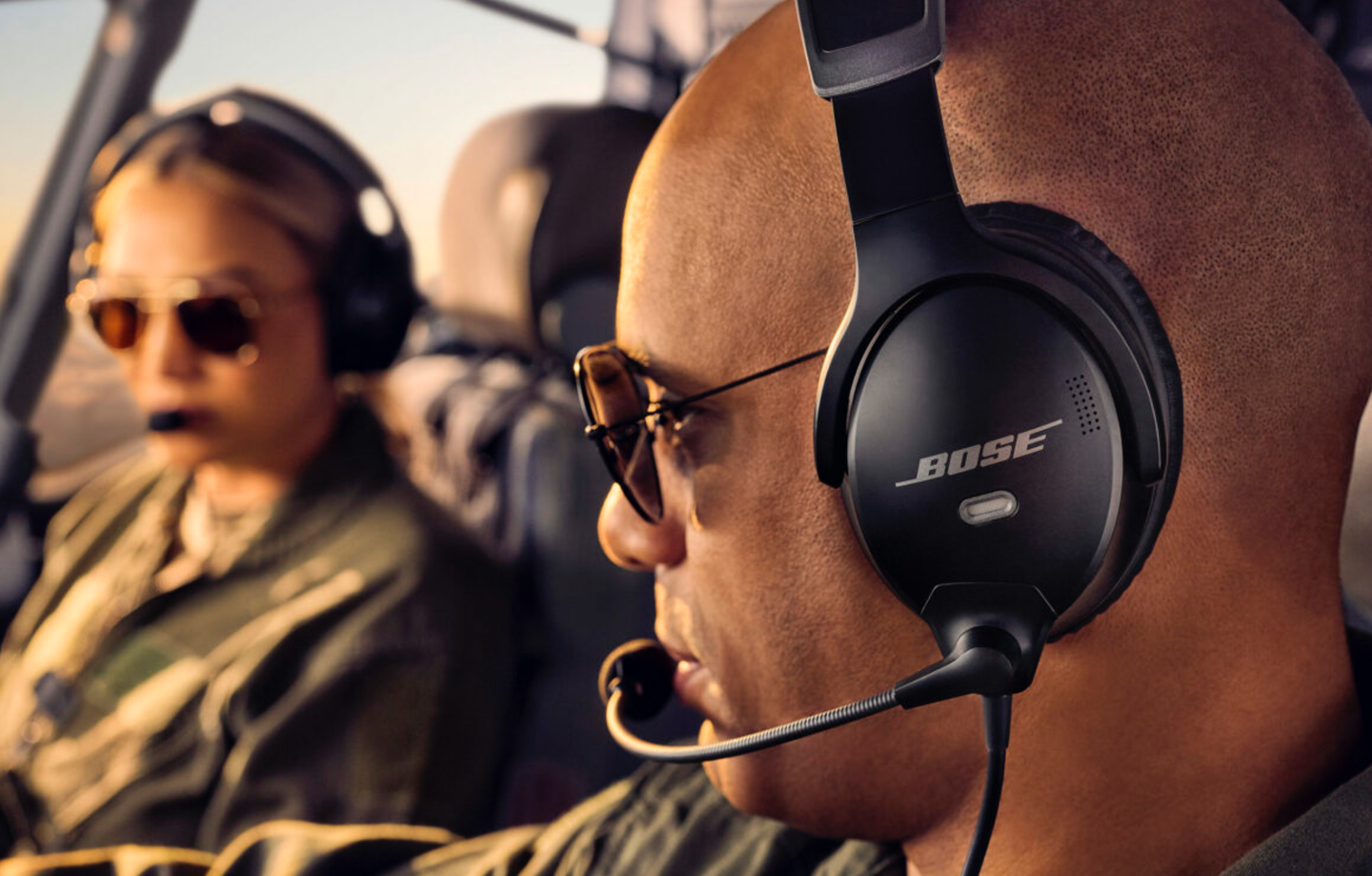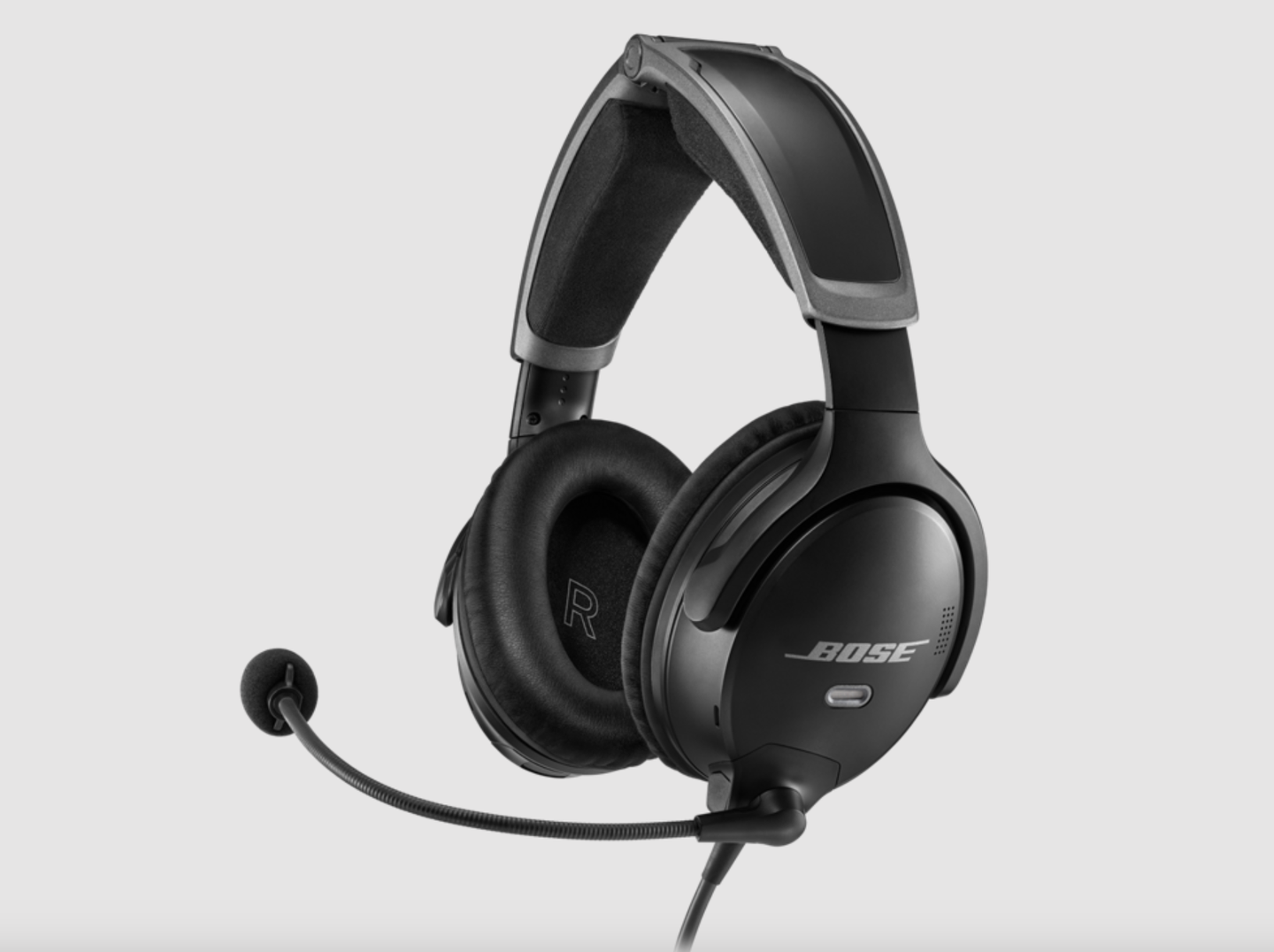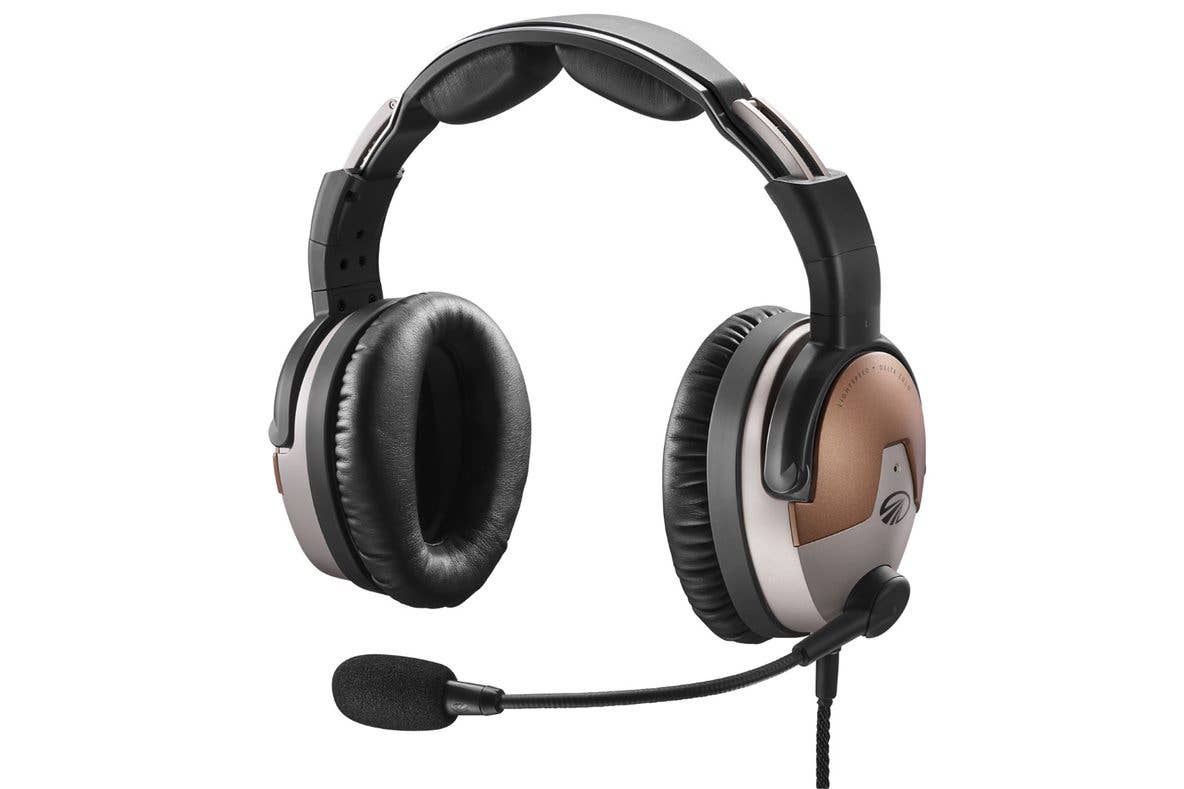2016 Headset Roundup
Making sense out of the array of aviation headsets available today
 BeechDavid Clark ProX |
According to studies by the FAA, hearing is second only to vision as a sensory mechanism to obtain critical information during the operation of an aircraft. Hearing allows pilots to identify and process the various sounds that come from the aircraft's engine, fuselage, instruments and radio. Experienced pilots may not realize that they use kinesthesia---the sensitive sensory perception your body has to tell you your position and direction of movement---to detect subtle changes in the aircraft, such as the approach to a stall or the proper landing speed. Much of kinesthesia relies on hearing.
The damage that can occur to our sense of hearing---especially from cockpit noise---was not of great concern to pilots until 1972 when the Federal Aviation Administration (FAA) issued Advisory Circular AC 91-35---"Noise, Hearing Damage, and Fatigue in General Aviation Pilots." After several studies by the U.S. Military, NASA, and the Civil Aeromedical Institute (CAMI), the FAA began taking a serious look at hearing damage to pilots, and several manufacturers introduced their first aviation headsets to the GA world.
Today, we have a vast selection of headsets, as our matrix shows. Far beyond the rudimentary and uncomfortable early headsets, today's models pack everything from adaptive noise reduction to LED lights in the ear cups, and much more. We operate in a luxurious world of being able to select different types of headsets with variations in everything from fit to attenuation technology. That vast selection can also be confusing, and makes buying the right headset a difficult task because a headset that is right for one cockpit may be useless in another.
One problem is that we all fly different aircraft with vastly different noise profiles. The cockpit of the Antonov An-2---which serves several CAF detachments---is far different from the cockpit of a Cirrus SR-22, yet they're often served by the same headset. The cockpit noise in a Great Lakes biplane sounds nothing like the noise in a typical LSA or a Cessna 172. Yet, many pilots would fly all these aircraft with the same headset. Though they're all loud, the type of noise they generate is different; it's located in different frequencies and hits the pilot's ears at varying sound pressure levels.
Headsets are also a subjective item. Ask any two pilots what their favorite headset is, and you'll likely get two different answers. Like flight bags and sunglasses, the right fit, comfort and protection level of a headset is in the ears of the wearer. Furthermore, price isn't a good indication of quality or usefulness.
 According to the Occupational Safety and Health Organization (OSHA), a Cessna 172 has a maximum noise level of around 101 dB, while a Cessna 182 comes in around 107 dB. Both OSHA and the Environmental Protection Agency (EPA) agree that permanent hearing damage is likely when exposed to either environment for an hour or more. According to the Occupational Safety and Health Organization (OSHA), a Cessna 172 has a maximum noise level of around 101 dB, while a Cessna 182 comes in around 107 dB. Both OSHA and the Environmental Protection Agency (EPA) agree that permanent hearing damage is likely when exposed to either environment for an hour or more. |
Two Flavors
Today's headsets come in two basic types: active noise reduction (ANR) and passive noise reduction (PNR).
On an ANR headset, a tiny microphone inside the ear cup picks up the noise around it. The noise sample is passed to electronics that produce an exact opposite "mirror image" of the noise. Tiny speakers generate the new sound back out to the ear cups. Because the generated sound is an "anti-sound" to the original noise, they meet and cancel each other out. The result is perceived silence. ANR has been the rage for a few years now, led by the headphone industry related to MP3 players and digital music.
ANR mainly attenuates (reduces) certain low frequencies, so that normal speech and engine sounds are still heard. Since ANR headsets rely on electronics to block damaging noise, they don't need to clamp tightly to your head and can be lighter and smaller than passive noise reduction headsets.
Passive noise reduction headsets attenuate noise using mechanical means. These headsets block all noise across a frequency spectrum fairly evenly, and they do it by using barriers to stop the sound waves. Passive headsets close firmly against the wearer's ears, and use optimum-shape ear cups packed with dense foam. Gel or foam ear seals conform to the bones around the ear serving to help block sound waves.
 Bose A20 |
Hearing Damage 101
Noise is a form of mechanical energy. Sound waves are variations in air pressure that can be measured by three distinct variables: frequency, intensity and duration. Frequency is measured in wave cycles per second, or "hertz." Sound that is audible to the human ear falls in the frequency range of 20 Hz---20,000 Hz, with human speech in the range of 500 to 3,000 Hz.
Sound Intensity is measured in dB ("decibels"), with the average human ear having greatest sensitivity between -10 dB and +25 dB. Duration is a measurement of how long a sound lasts. Coupled with intensity and frequency, the hearing damage caused by exposure to an intense, short-duration sound can be as bad exposure to a less intense sound for a long period. In aviation, there are many sources of noise, with the two main culprits being engine noise and slipstream noise---the sound of air going over the airplane's fuselage.
Doctors warn that steady exposure to sounds around the 90 dB-110 dB intensity range will cause permanent hearing loss. Unfortunately, the average small airplane cockpit noise level is right in that range. Duration is also a factor. While exposure to 90 dB for 8 hours can cause permanent hearing damage, exposure to 110 dB for as little as 30 minutes can do the same harm. Like carbon monoxide, noise exposure has harmful effects that are cumulative.
According to the Occupational Safety and Health Organization (OSHA), a Cessna 172 has a maximum noise level of around 101 dB, while a Cessna 182 comes in around 107 dB. Both OSHA and the Environmental Protection Agency (EPA) agree that permanent hearing damage is likely when exposed to either environment for an hour or more. The sound levels for other GA aircraft are all in the same range---with many being even louder. Studies have concluded that permanent hearing loss occurs in about 30% of aviators.
Choosing The Right Headset
The key to selecting the right headset is to examine your cockpit environment and start by determining whether ANR or PNR would work best. Active attenuation works best in cockpits with sounds that don't vary much. It also works best on low-frequency sounds. So ANR would be ideal in newer aircraft cockpits such as Cirrus, Diamond, the latest Cessnas and Pipers, as well as most turboprop aircraft. They are also suited to most LSA aircraft powered by the relatively even and quiet Rotax engines. The larger Bonanzas and cabin-class twins respond well to ANR headsets, as do many small business jets.
ANR attenuates mostly frequencies in the lower spectrum; from about 20 Hz to around 300 Hz, with peak reduction at 70-150 Hz. Studies have shown that peak noise levels generated by the propeller, engine, and exhaust all combine around the 100 Hz point---precisely the area that ANR attenuates best.
Passive reduction is better suited to loud cockpits with widely varying noise levels and frequencies. Aerobatic aircraft, anything with an open cockpit, many warbirds, or most ultralight aircraft are ideal candidates for PNR. The reason is because ANR gets "confused" by sounds that change in frequency or that change intensity quickly. ANR tends to create a "warble" sound in the speakers in those conditions that sounds like the listener is underwater. Try it in an open cockpit biplane sometime.
Another issue is slipstream, or the air flowing over the airplane. Many jet pilots have found that ANR doesn't attenuate this high-frequency sound very well. Some prefer passive headsets that block all frequencies equally. Like any rule, there are many exceptions, and that's why it is important to take advantage of manufacturers' and dealers' "evaluation time (usually 30-days) to try a headset in the environment where it will be used.
 Clarity Aloft Pro |
Buyers should wear a headset for longer than the 3 minutes spent evaluating it at the store or show booth. Anything feels comfortable for a few minutes. Keeping the headset on for an hour or so will reveal the unit's hot-spots (where it rubs against the wearer), its clamping force, its weight, and how well it works in your cockpit. On ANR headsets, be sure to check what happens when the batteries die (ANR headsets rely on electrical power for attenuation- they become passive headsets when the batteries die).
What's New
ANR technology hasn't changed much since it was introduced. However, improvements on its performance have been made, such as headsets that can "adapt" to an environment by sampling its noise profile and generating the out-of-phase sound in real time (as opposed to a pre-set frequency curve). Headset makers have mostly added convenient features to existing technology (such as Bluetooth and LED map lights), along with using newer materials for lighter weight and improved comfort.
The biggest recent news is the announcement by Sennheiser that they're leaving the aviation headset market. Market leaders such as Bose and Lightspeed continue to have success, with the Bose A20 selling well and Lightspeed introducing their new "Tango" headset, which is the first truly viable wireless headset on the market. The on-ear headset (the unit sits on the ear instead of around it) market has remained strong, with the only contender being David Clark's amazing Pro-X model. Another innovation comes from the music world with in-ear headsets. Clarity Aloft and Quiet Technologies offer in-ear headsets that weigh less than an ounce and use highly advanced transducer technology to deliver sound right to the eardrum without clamping or heavy hardware.

Subscribe to Our Newsletter
Get the latest Plane & Pilot Magazine stories delivered directly to your inbox







